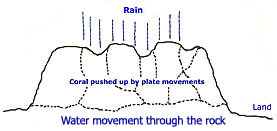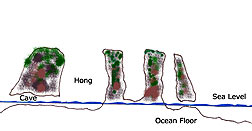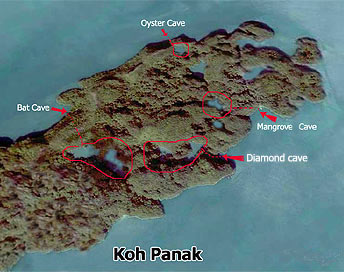Hongs, Caves, Lagoons
The significant amount of limestone found in the islands suggests that they were once coral reefs. The most likely theory is that the cave systems have probably been in existence since the formation of the coral reef. Underwater caves in reefs are common today and coral often grows upwards with large depressions and gaps. As the coral died and regrew upon itself en masse, large mounds of coral reef took shape. The gaps between the layers of coral were filled by deposits of clay and sand. Over time, these deposits hardened and adhered to the limestone. Approximately 75 million years ago, shifts in the earth's crust caused many of these mounds of coral reef to be pushed up through the surface of the water. Over time, rain and tidal currents eroded away a good portion of the softer deposits around the limestone, forming numerous caves throughout the islands
The formation of the lagoons was probably similar in nature to the way the caves were likely formed. When the rock was pushed out of the ground, the depressions would have collected water from rain. This rain water, being pure, could have dissolved minerals in the rock at weak points and formed a basin of water. As the tides worked in combination with the rain water to erode the sediment away, the caves and basins of water lying in the interior of the islands were connected. |
||||||||||||
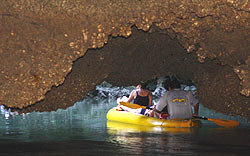 |
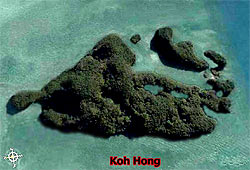 |
|||||||||||
Informations
- Lagoon, Hongs, Caves
- Animals of Phang Nga Bay
- Birds of Phang Nga Bay
- Nature Guide
- Flowstone
- Year-Round Season


